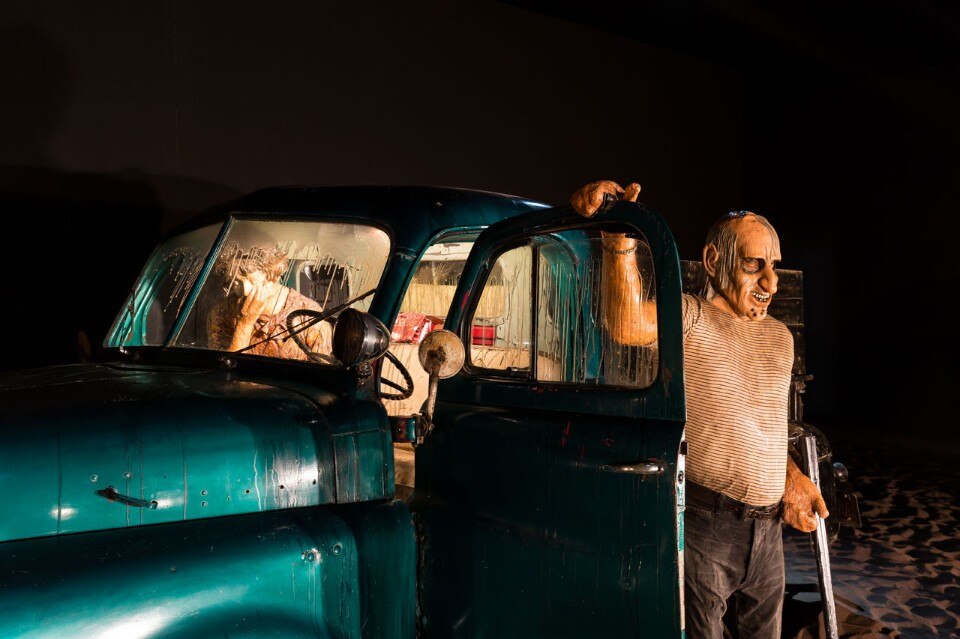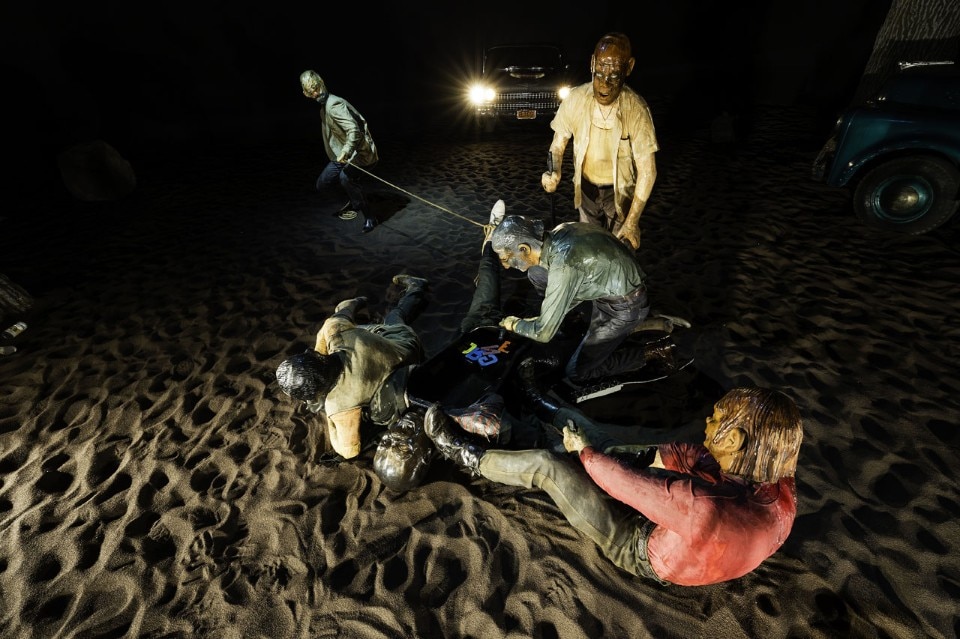
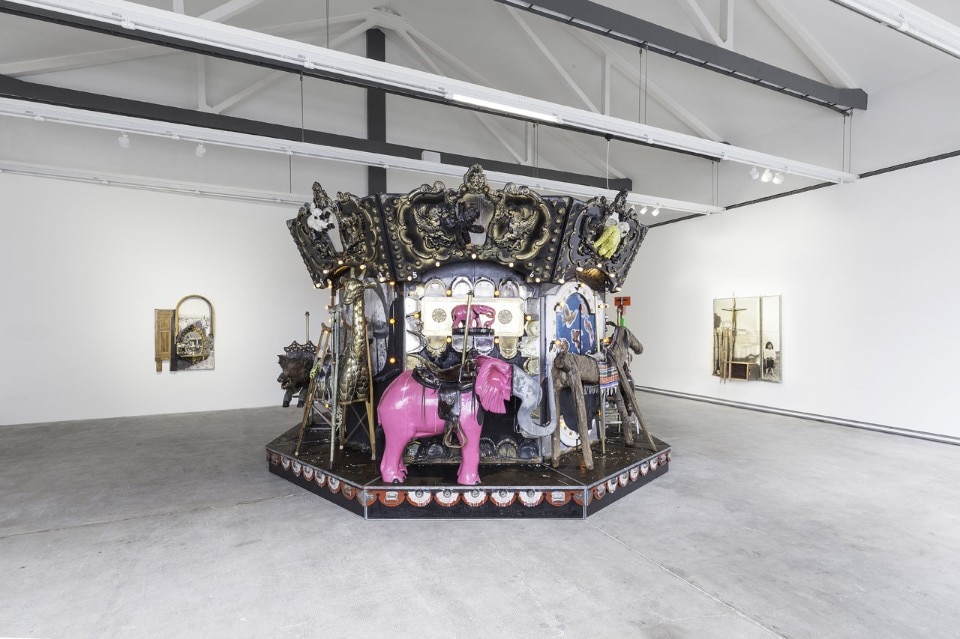
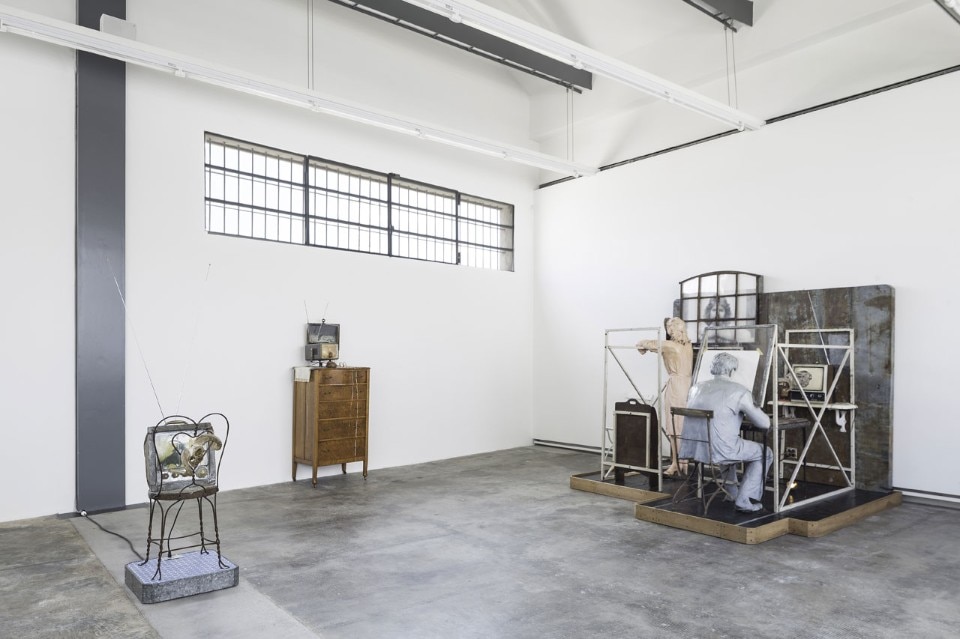
Kienholz employed used and discarded objects to create scenes of ordinary abomination: domestic spaces, bars, brothels, amusement rides and other places of entertainment in which daily life is marked by solitude, abuse and violence. The violence is visceral and disintegrates all possible stability. Nothing in such a society can last. Chaos reigns supreme. His human subjects are enveloped in an emotional void. Their bodies are exploited and dismembered by trivial, destructive sexuality. His entire world is in the grip of a kind of sexualisation. Even the objects, ugly and broken, express suffering and desperation.
This is how Kienholz brings out the insalubrity and obscenity concealed by society’s facade of respectability. It is clear that in this type of world, the sole certainty is the perpetration of perversion and savagery. Each of Kienholz’s tableaux is a comment on social conventions, the citizenry, the family, morality, what is male and female, home interiors, and pleasure. In The Bronze Pinball Machine with Woman Affixed Also (1980), a pair of women’s legs is grafted onto the front of a pinball machine, reducing the female body to an object of pure sexual entertainment. Jody, Jody, Jody (1994), inspired by an item in the news, depicts a gruesome scene of child abuse.
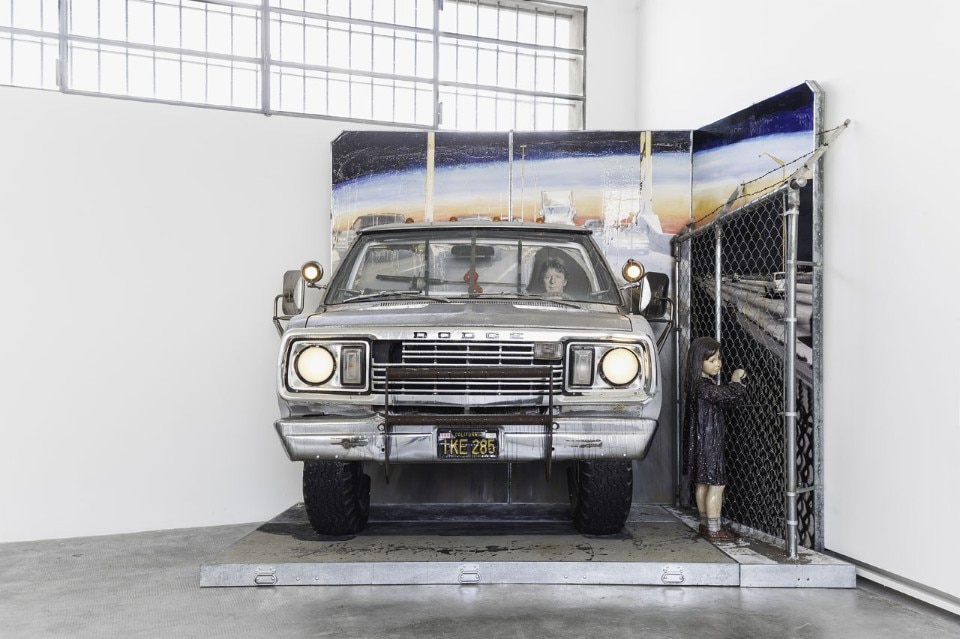
The Caddy Court (1986-1987) is a mobile installation with a van spliced between the front and rear of a Cadillac. Inside are Supreme Court justices whose heads have been replaced by the mean snouts of stuffed dogs and wolves. Numerous assemblages incorporate or simulate monitors from which indecent objects or howling animals protrude outward. The invasiveness of television, the colonisation of our imagination, and the stupidity of information are responsible for frustration and melancholy, and they generate monsters.
In a 1984 letter to Sidney Felsen, Edward Kienholz writes, “You may have guessed that I have long had a love/hate relationship with American TV. I sit dummy style in front of that marvellous communication tool and find my years slipping by and my mind turning to slush from the 95% trash being beamed my way. To try and understand my on-going stupidity and perhaps to express some kind of critical objectivity I find that I keep making TV sets out of anything that vaguely resembles a TV apparatus (oil containers, block of concrete, surplus jerry cans etc).”
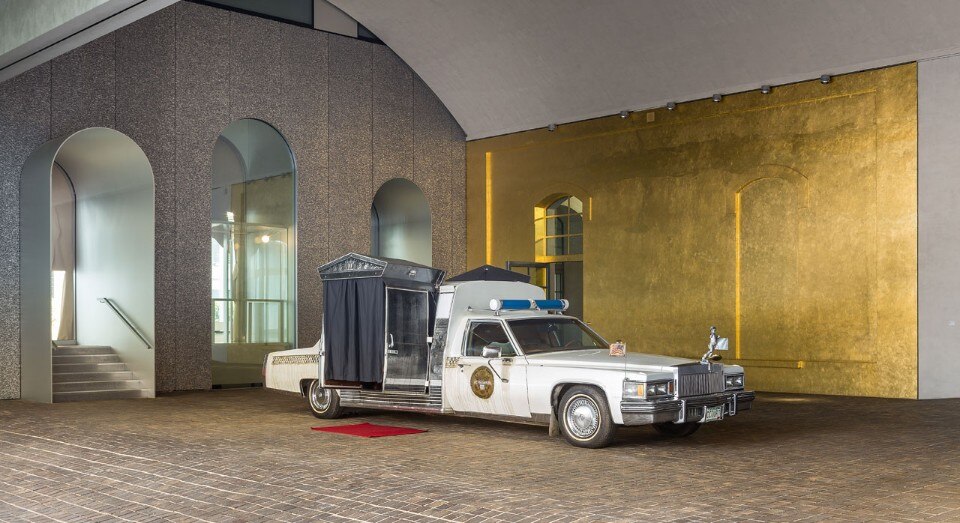
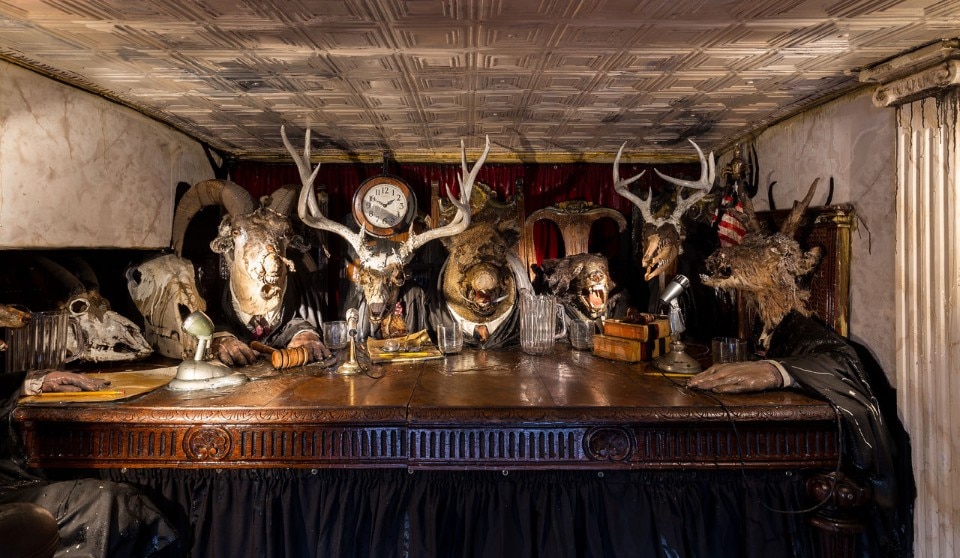
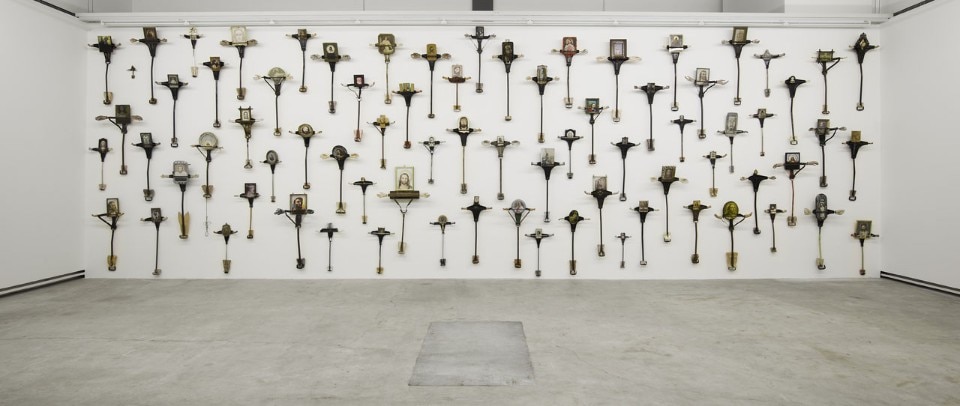
until 31 December 2016
Kienholz: Five Car Stud
Fondazione Prada, Milan
Curator: Germano Celant


